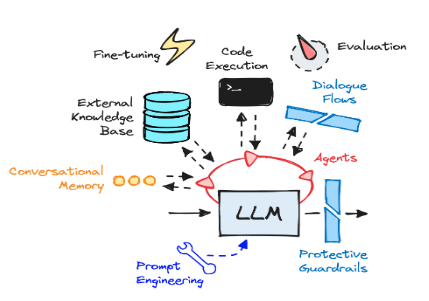Project Summary:
In this project, the primary objective is to create a versatile text generation system adept at extracting insights from various document formats such as PDFs, Word documents, and raw text strings. The system’s workflow involves tokenizing the input data, breaking it down into meaningful units, and then employing a generative model to compose coherent reports. These reports serve as a synthesis of the information found in the input documents, presenting a consolidated view that can be tailored to emphasize specific aspects, such as highlighting a candidate’s specialization or expertise in a particular field.
The system’s flexibility in handling diverse document formats ensures that it can be seamlessly integrated into various applications, from parsing resumes to summarizing research papers, providing a valuable tool for automating the extraction and articulation of insights from textual data.
Through this project, the aim is to enhance efficiency in information synthesis and reporting, ultimately facilitating more informed decision-making processes.

System Architecture
Input Module:
- Responsible for ingesting different types of documents, including PDFs, Word documents, and raw text strings.
- Utilizes libraries or tools for document parsing and extraction.
Document Parse
- Converts the input documents into a standardized format or raw text.
- Utilizes specific parsers for PDFs, Word documents, and text files.
- Extracts metadata, headings, and content.
Tokenizer:
- Breaks down the raw text into tokens, which are the fundamental units for the generative model.
- Handles tokenization based on language syntax, context, or custom rules.
- Prepares the input for the generative model.
Generative Model:
- Employs a pre-trained or custom generative model (such as GPT-3 or similar).
- Takes tokenized input and generates coherent and contextually relevant text.
- Fine-tuned to generate reports with emphasis on specific aspects (e.g., candidate specialization).

Report Composition Module:
- Assembles the generated text into a structured and formatted report.
- Allows customization to emphasize specific information.
- Adds headers, bullet points, and other formatting elements.
User Interface (Optional):
- Provides an interface for users to input documents and configure report settings.
- Displays generated reports.
- Allows customization of report emphasis.
Output Module:
- Outputs the synthesized reports in various formats (PDF, Word, etc.).
- May include options for exporting to external systems or databases.
Feedback Loop (Optional):
- Allows users to provide feedback on generated reports.
- Integrates feedback to improve the generative model through periodic updates.
Security and Compliance Module:
- Implements measures to ensure data security and compliance with privacy regulations.
- Handles user authentication and access control.
Logging and Monitoring:
- Logs system activities and errors for troubleshooting and analysis.
- Implements monitoring tools to track system performance and usage.

- User uploads input documents through the interface or API.
- Document Parser extracts text and metadata.
- Tokenizer breaks down the text into meaningful units.
- Generative Model processes tokens and generates coherent text.
- Report Composition Module assembles the generated text into a report.
- User customizes the report emphasis through the interface (optional).
- Output Module exports the finalized report in the desired format.
- Optionally, the Feedback Loop gathers user feedback for model improvement.
This architecture allows for flexibility in handling various document formats and tailoring reports to specific requirements. The generative model’s ability to understand and synthesize information from different contexts contributes to the versatility of the system.
Development Stages for AI Model (2-3 Months):
Project Setup and Research
- Define project requirements and select tokenization and generative model approaches.
- Set up the development environment and version control.
Data Input and Tokenization

- Implement a module to read data from various sources.
- Develop a tokenization module to process input text.
- Integrate the modules and conduct testing.
Generative Model Integration
- Choose or develop a generative model for text generation.
- Integrate the model with the tokenization module.
- Train and fine-tune the model for optimal performance.
Report Generation and Optimization
- Develop a module to organize and compile the generated text into a 500-line report.
- Optimize the system for performance and efficiency.
- Conduct comprehensive testing and address any issues.
Focus Customization Feature:
- Implement a feature to allow users to customize the focus of generated reports, such as emphasizing specialization or expertise.
- Fine-tune the model to better respond to user-defined preferences.
User Interface Refinement:
- Enhance the user interface for better user experience.
- Incorporate feedback from usability testing and make necessary adjustments.
Documentation and Training:
- Create comprehensive documentation for system usage, API integration, and troubleshooting.
- Provide training materials for users and developers.
Deployment:
- Deploy the text generation system in a controlled environment for initial use and feedback.
- Address any issues identified during the initial deployment.
Challenges:
The primary challenge would be to create a correct relationship between all the data gained from the CV into insights for the reports. We would require few dummy reports for analysis and understand how the different parameters interact and the way report is structured.
The secondary challenge will include to ‘Focus Customization Feature’. The model will be fine-tuned to change responses based of the special focus on particular aspects of the candidate.
Since you have stayed this far, we feel this might interest you!


